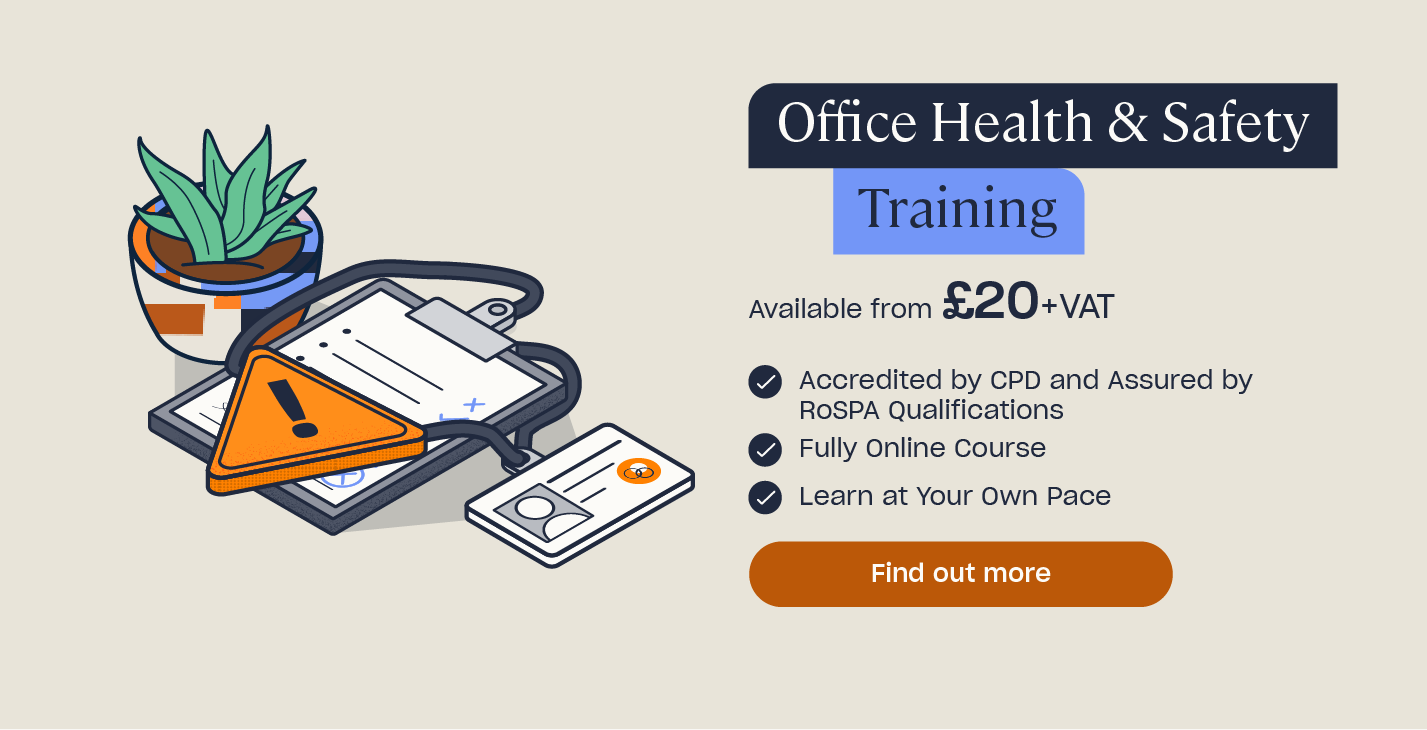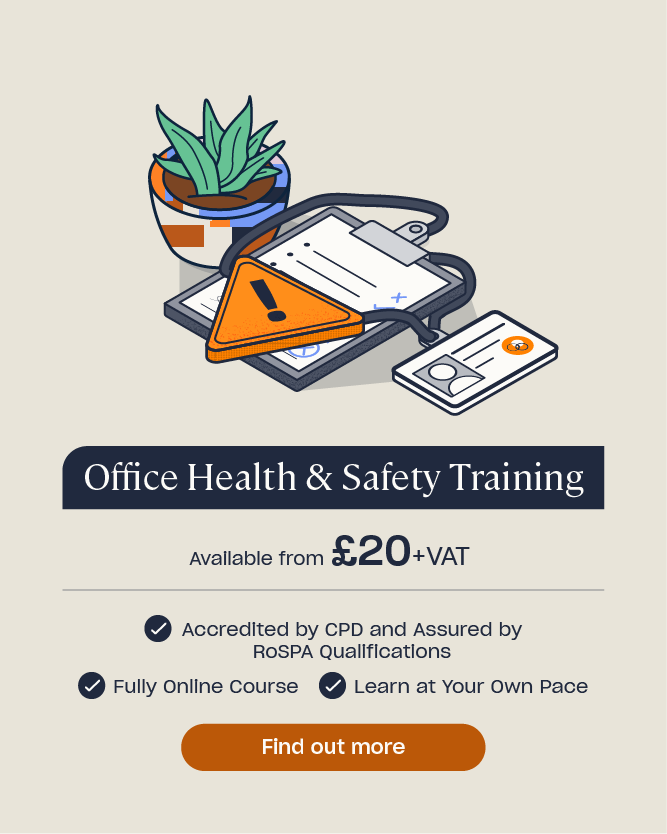The 5 Most Common Occupational Illnesses (and How to Prevent Them)
What is an ‘Occupational Illness’?
An occupational illness is a chronic ailment caused by exposure – typically over a prolonged period – to workplace hazards or work activities.
It’s hard to prevent occupational illnesses because work is often difficult to spot and regulate. An illness usually develops over time, and as a result, the connection between cause and effect is not immediately obvious. By the time you notice it, the illness may require extensive treatment or could be permanent.
Occupational illness is a serious problem for businesses. In fact, more legal claims result from occupational ill-health issues than any other work-related safety issue.

Noise-Induced Hearing Loss
Noise-induced hearing loss (NIHL) is permanent and irreversible. It accounts for approximately 3% of compensation claims in the UK.
According to the Health and Safety Executive, an estimated 2 million people are exposed to dangerous levels of noise at work, and NIHL accounts for the second highest percentage of occupational health insurance claims: 75%.
What are the Symptoms?
Someone with noise-induced hearing loss may struggle to hear people talking three feet away, experience a sensation of ‘fullness’ in their ears after leaving a noisy area, or suffer from tinnitus: a continuous or intermittent ringing or buzzing that varies in volume.
What’s the Cause?
If a sound reaches above 85 decibels prolonged exposure will cause permanent hearing loss.
Working in an environment where you are exposed to activities with, say, electric hand tools (which emit around 95 decibels) without sufficient safety measures or the use of Personal Protective Equipment, your chances of getting NIHL increase.
How Do I Prevent It?
NIHL happens gradually, so it’s difficult to catch before the damage has already been done and the sufferer may not even notice it happening. So, be prepared, and wear PPE – such as noise-reducing earmuffs – if you work in an environment with high noise levels. Cooperate with your employer by using any noise control devices installed and follow the work methods taught to you.

Occupational Dermatitis
Occupational dermatitis is a kind of skin inflammation caused by allergens or irritants, and it’s accountable for approximately 13% of ill health cases reported under RIDDOR every year.
What are the Symptoms?
Dermatitis is inflammation of the top layer of skin. Dermatitis causes the skin to breaks out in rashes which burn or sting. Skin may become:
- Inflamed.
- Itchy.
- Blistered (these may weep/ooze).
- Cracked and dry.
Occupational dermatitis most commonly affects the hands and forearms. This is because the substances that provoke dermatitis typically come into contact with these areas.
What’s the Cause?
Dermatitis can happen immediately after or due to prolonged exposure to a workplace irritant. Common culprits, which account for approximately 55% of cases, are soaps, detergents, cleaning chemicals, and flour. Washing hands too often can also cause contact dermatitis.
Cleaners, florists, hairdressers, cooks, metal workers, dental practitioners, and beauticians are at risk.
Other irritants include soil, meat, fish, poultry, citrus fruits, dough, spices, herbs, and sugar.
How Do I Prevent It?
Gloves can reduce exposure and prevent dermatitis. However, some people are sensitive to latex and rubber and may require cotton lined or hypoallergenic gloves. Job rotation is also a viable option to reduce exposure.

Occupational Asthma
Severe asthma attacks can lead to hospitalisation and can be fatal. Occupational asthma is usually triggered in those who already suffer from asthma, but anyone can develop it.
What are the Symptoms?
Asthma is an inflammation of the airways. Asthma causes the airways to constrict making them unable to transport sufficient air to the lungs. During an asthma attack, someone may suffer from;
- Wheezing.
- Painful coughing.
- Shortness of breath.
- Chest pressure or tightness.
- Rapid breathing.
- Anxiety and panic.
- Pale, sweaty face.
- Difficulty talking.
- Blue lips or fingernails.
What’s the Cause?
Occupational asthma is the result of prolonged exposure to respiratory sensitizers present in the workplace or as part of work activities. This causes the airways to enter into a hypersensitive state which affects their ability to breathe.
The main causes of occupational asthma are the inhalation of dust from flour or grain (bakers have the second highest incident rate of all occupations); chemicals, such as those in spray paint, cleaning materials, or adhesives; and proteins in fish and eggs.
Isocyanates are chemicals that are often present in 2-pack paints, glues, and pesticides, and are a common cause of occupational asthma.
How Do I Prevent It?
The best way to prevent occupational asthma is to remove the hazardous substance and replace it with a less harmful one. But there are instances when removing a hazard is impossible. Exposure should be minimised through controls such as ventilation, job rotation, proper handling procedures, good housekeeping, and PPE.

Stress and Mental Ill Health
Work-related stress and mental ill health are reactions to significant levels of prolonged pressure and demand in the workplace, particularly when that demand exceeds their capabilities. It compromises their ability to cope and causes their mental state to decline.
Chronic stress affects work and overall health and may lead to depression.
What are the Symptoms?
Chronic, work-related stress causes physical and mental ailments, such as:
- Skin problems.
- Chest pains.
- Headaches.
- Feeling sick or dizzy.
- Panic attacks.
- Struggling to concentrate.
- High blood pressure.
- Frequent colds.
- Tiredness.
- Apathy.
- Forgetfulness.
- Becoming overly emotional/aggressive/negative.
- Refusing to listen to advice/requests.
- Becoming withdrawn.
What’s the Cause?
Unlike the other illnesses, causes of work-related stress are more abstract, and they aren’t confined to one or two specific occupations.
Work-related stress is caused by six primary areas:
- Too many or too little demands.
- A lack of control.
- A lack of support.
- Bad relationships.
- Your role.
- Badly communicated workplaces changes.
How Do I Prevent It?
Poor organisation, support, practices, and management at work are major sources of occupational stress. Employees can reduce stress by:
- Taking short breaks during the day.
- Using holiday allowances.
- Maintaining a clear divide between home and work.
- Implementing end of day habits like writing a list of what needs to be done tomorrow.
- Asking for help.
- Improving time management skills.
- Being realistic about what you can and can’t get done.
Employees also need to take care of themselves outside of work. Raising awareness on issues relating to stress and healthy habits can help employees improve their lives inside and outside of work.
Musculoskeletal Disorders (MSD)
MSD is the number one occupational illness in the UK. This is serious because muscle and joint problems compromise your ability to work and live well.
Musculoskeletal disorders include a variety of strains, sprains, and overuse problems. For example back problems, slipped discs, and work-related upper limb disorders.
What are the Symptoms?
Symptoms vary from person to person and depend on the affected area but might typically include:
- Pain.
- Numbness.
- Stiffness.
- Swelling.
- Tingling.
What’s the Cause?
The causes of common musculoskeletal problems are:
- Lifting heavy or awkward loads.
- Repetitive activities such as packing and stacking.
- Sitting in awkward positions for prolonged periods.
How Do I Prevent It?
Numerous health and safety practices reduce the risk of MSDs. If your job involves manual lifting, consider the assistance of moving vehicles or another person. Reduce weight where possible and distribute it evenly while carrying. Break repetitive tasks performing repetitive tasks, can you break it up now and then?
If you are contracting problems in your wrists and neck because of your desk layout, reorganise your keyboard, monitor or mouse layout. Also, consider changing your chair or desk to accommodate your height. Whatever your occupation is, avoid positioning yourself awkwardly as this places strain on your body.

Appropriate health and safety measures reduce the chance of people developing occupational illnesses – like those seen here – to a minimum. As a result, everyone can carry out their duties efficiently, and it will ultimately promote a successful business where everyone can cooperate and all work earnestly.
Statistics sourced from: The Health and Safety Executive
Further Resources:
- Office Health and Safety Quiz
- Common Office Injuries and How to Prevent Them
- What is an Occupational Health Assessment?
- Office Health and Safety Training







